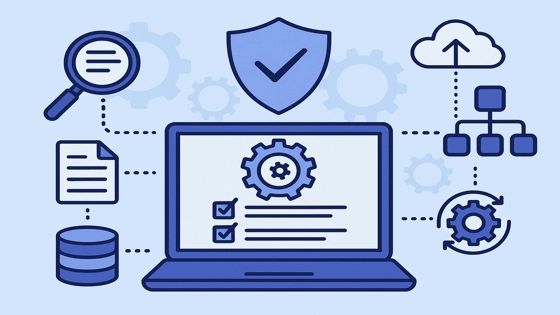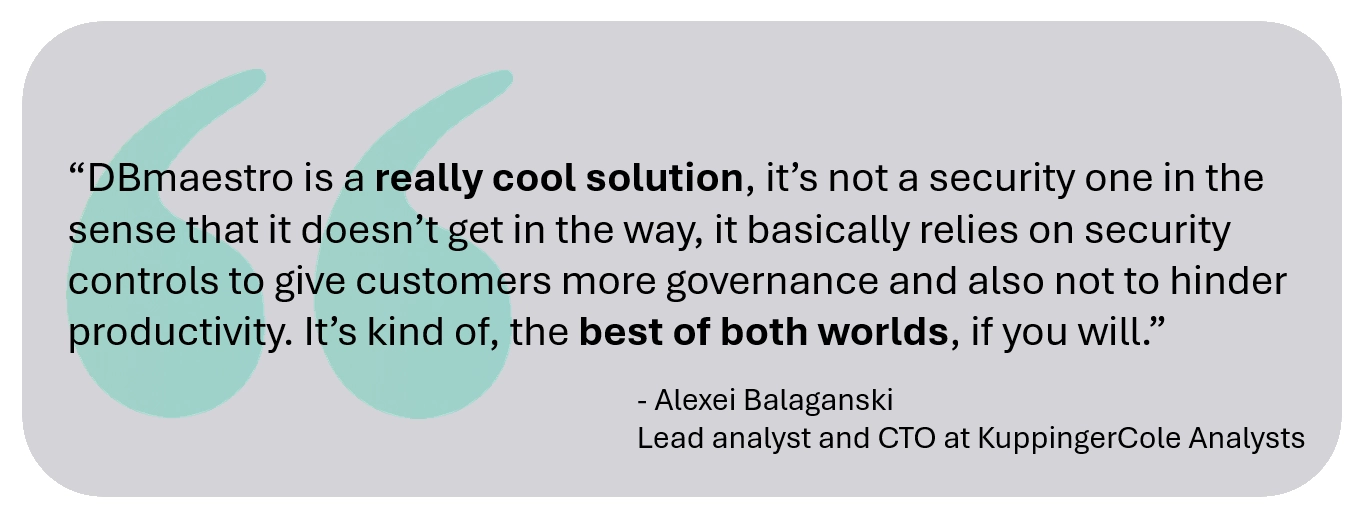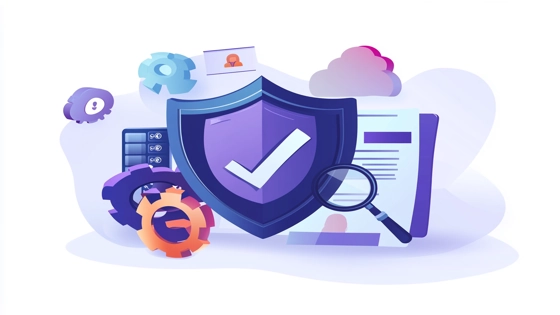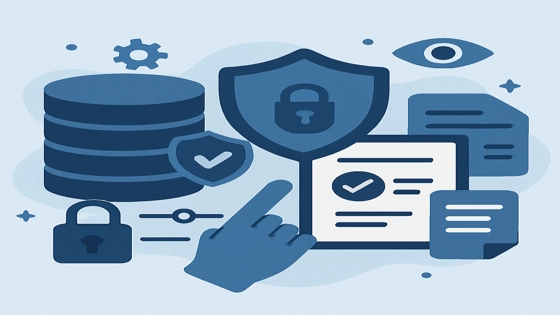What You’ll Learn
– The critical role of regulatory compliance automation in database security
– Common security risks in traditional database management
– How automated database management improves compliance and security
– Key features of compliance automation for database security
– Best practices for implementing regulatory compliance automation
The Role of Regulatory Compliance Automation in Database Security
Regulatory compliance automation plays a crucial role in enhancing database security and ensuring adherence to various regulatory standards. By leveraging automated tools and processes, organizations can significantly reduce the risk of data breaches, unauthorized access, and compliance violations. This approach not only strengthens data protection measures but also streamlines the often complex and time-consuming task of maintaining regulatory compliance.

Common Security Risks in Traditional Database Management
Traditional database management approaches often expose organizations to various security risks:
- Human errors in configuration and access control
- Inconsistent application of security policies
- Delayed patch management and vulnerability fixes
- Inadequate monitoring and auditing capabilities
- Difficulty in maintaining up-to-date compliance documentation
These vulnerabilities can lead to data breaches, regulatory fines, and reputational damage.
How Automated Database Management Improves Compliance and Security
Automated database management significantly enhances both compliance and security through several key mechanisms:
Automating Security Policies and Access Controls
Automated database security tools enforce predefined security policies and access controls consistently across all database instances. This reduces the risk of unauthorized access and ensures that only appropriate personnel can interact with sensitive data.
Continuous Monitoring for Compliance Violations
Real-time monitoring capabilities allow organizations to detect and respond to potential compliance violations promptly. This proactive approach helps prevent security incidents before they escalate.
Automated Patch Management and Vulnerability Fixes
Automated database management systems can identify and apply necessary security patches and updates automatically, reducing the window of vulnerability to known exploits.
Key Features of Compliance Automation for Database Security
Effective compliance automation solutions for database security typically include:
- Policy enforcement mechanisms
- Real-time monitoring and alerting
- Automated risk assessment tools
- Comprehensive audit logging and reporting
- Integration with existing security infrastructure
- Automated patch management and vulnerability scanning
These features work together to create a robust, automated security framework that maintains continuous compliance and reduces the risk of data breaches.

Best Practices for Implementing Regulatory Compliance Automation in Databases
To maximize the benefits of regulatory compliance automation, organizations should follow these best practices:
Selecting the Right Compliance Automation Tools
Choose tools that align with your specific regulatory requirements and integrate seamlessly with your existing database infrastructure. Look for solutions that offer comprehensive coverage of compliance standards relevant to your industry.
Integrating Compliance Automation into DevOps Workflows
Incorporate automated compliance checks into your CI/CD pipelines to ensure that security and compliance are maintained throughout the development and deployment process. This integration helps catch potential issues early and reduces the risk of non-compliant changes reaching production environments.
Conducting Regular Compliance Audits with Automated Tools
Leverage automated auditing tools to perform regular compliance checks and generate detailed reports. This practice helps maintain a continuous state of compliance and provides valuable documentation for regulatory audits.
Key Takeaways
- Automated database security significantly reduces vulnerabilities and streamlines compliance management.
- Real-time monitoring and automated policy enforcement are crucial for maintaining continuous compliance.
- Integrating compliance automation into DevOps workflows ensures security throughout the development lifecycle.
- Regular automated audits help maintain compliance and provide necessary documentation for regulatory inspections.
Conclusion
Regulatory compliance automation is transforming the landscape of database security, offering organizations a powerful tool to protect sensitive data and meet complex regulatory requirements. By implementing automated solutions, businesses can significantly reduce the risk of data breaches, streamline compliance processes, and maintain a robust security posture.
As the regulatory environment continues to evolve and cyber threats become increasingly sophisticated, the importance of automated database security cannot be overstated. Organizations that embrace these technologies will be better positioned to protect their data assets, maintain customer trust, and navigate the complex world of regulatory compliance with confidence.
Ready to enhance your database security and streamline your compliance efforts? Explore DBmaestro’s database change management solutions to automate your security processes and ensure continuous compliance. Learn more about our Database DevOps solutions and take the first step towards a more secure and compliant database environment today.
]]>What Are Database Compliance Standards and Why Do They Matter?
Database compliance standards are sets of regulations and guidelines that govern how organizations handle, store, and protect sensitive data. These standards are critical for several reasons:
- Data Security: They ensure that proper security measures are in place to protect sensitive information from unauthorized access and breaches.
- Privacy Protection: Compliance standards safeguard individuals’ privacy rights by regulating how personal data is collected, used, and stored.
- Regulatory Compliance: Adhering to these standards helps organizations avoid legal penalties and reputational damage.
- Trust Building: Demonstrating compliance builds trust with customers, partners, and stakeholders.
Understanding Database Compliance Standards
Several key database compliance regulations exist globally, each with specific requirements:
- GDPR (General Data Protection Regulation): Protects EU citizens’ personal data and privacy.
- HIPAA (Health Insurance Portability and Accountability Act): Safeguards medical information in the United States.
- SOX (Sarbanes-Oxley Act): Ensures accurate financial reporting for public companies.
- PCI DSS (Payment Card Industry Data Security Standard): Protects credit card information.
- ISO 27001: Provides a framework for information security management systems.
The Challenges of Maintaining Compliance in Traditional Database Management
Traditional database management often faces several challenges in maintaining compliance:
- Manual Processes: Prone to human error and inconsistencies.
- Lack of Visibility: Difficulty in tracking changes and identifying potential compliance violations.
- Inconsistent Security Practices: Varying security measures across different environments.
- Slow Response to Changes: Inability to quickly adapt to new compliance requirements.
How Database DevOps Supports Compliance
Database DevOps principles and practices can significantly enhance an organization’s ability to meet and maintain compliance standards. Here’s how:
Automating Security Policies and Access Controls
DevOps automation ensures consistent application of security policies and access controls across all environments. This reduces the risk of human error and ensures that compliance requirements are consistently met.
Continuous Monitoring and Auditing
DevOps tools enable real-time monitoring of database activities, allowing for quick detection and response to potential compliance violations. Automated auditing processes provide a comprehensive trail of all database changes, simplifying compliance reporting.
Version Control and Change Management
Implementing version control for database schemas and configurations allows organizations to track changes over time, ensuring regulatory alignment and reducing compliance risks.
Best Practices for Implementing Database DevOps for Compliance
To effectively implement Database DevOps for compliance, consider the following best practices:
- Integrate compliance checks into your CI/CD pipeline.
- Implement “compliance as code” to automate policy enforcement.
- Use role-based access control (RBAC) to manage database permissions.
- Regularly conduct automated security scans and vulnerability assessments.
Pro Tip: Implement a “shift-left” approach by incorporating compliance requirements early in the development process to catch and address issues before they reach production.

Establishing Compliance-First DevOps Workflows
Create workflows that prioritize compliance at every stage of the development lifecycle. This includes:
- Automated compliance checks during code reviews
- Compliance validation as part of the build and deployment processes
- Regular compliance audits integrated into the DevOps cycle
Leveraging Database Compliance Automation Tools
Utilize specialized tools to enhance compliance efforts:
- Policy-based enforcement tools to automatically apply compliance rules
- Compliance scanners to detect and report on potential violations
- Configuration management tools to ensure consistent, compliant setups across environments
Compliance Metrics and KPIs to Track in Database DevOps
To measure the effectiveness of your compliance efforts, track these key performance indicators:
- Time to remediate compliance issues
- Number of compliance violations detected in production
- Percentage of automated vs. manual compliance checks
- Compliance audit pass rate
- Mean time between compliance failures
Key Takeaways
- Database DevOps practices significantly enhance an organization’s ability to meet global compliance standards.
- Automation, continuous monitoring, and version control are crucial DevOps elements that support compliance efforts.
- Implementing compliance-first workflows and leveraging specialized tools can greatly improve compliance outcomes.
- Regularly tracking compliance metrics helps organizations continuously improve their compliance posture.
 Conclusion
Conclusion
Database DevOps offers a powerful approach to meeting and maintaining global compliance standards. By integrating compliance considerations into every stage of the database development and management lifecycle, organizations can significantly reduce risks, improve security, and ensure consistent adherence to regulatory requirements.
As compliance standards continue to evolve and become more stringent, adopting Database DevOps practices will become increasingly crucial for organizations looking to stay ahead of regulatory challenges while maintaining agility and efficiency in their database operations.
Ready to enhance your database compliance efforts with DevOps? DBmaestro offers comprehensive solutions to help you automate and streamline your database DevOps processes while ensuring compliance with global standards. Contact us today to learn how we can help you achieve both agility and compliance in your database management.
]]>Understanding Regulatory Compliance Automation
Regulatory compliance automation refers to the use of technology and software to simplify and automate tasks required to meet regulatory standards. It integrates with a company’s existing systems to continuously monitor and enforce policies, automating processes such as tracking regulations, gathering data, and enforcing policies across various platforms. This automation reduces manual effort, minimizes human error, and enables organizations to adapt quickly to regulatory updates.

The Challenges of Keeping Up with Regulatory Changes
Organizations face significant challenges in tracking and adhering to evolving regulations. The complexity and frequency of regulatory changes can overwhelm compliance teams, leading to potential oversights and compliance gaps. Manual processes are often time-consuming and prone to errors, making it difficult for businesses to maintain consistent compliance across all operations.
How Automated Tools Help Achieve Regulatory Compliance
Automated tools play a crucial role in achieving and maintaining regulatory compliance:
Real-Time Monitoring and Alerts for Compliance Updates
Compliance automation platforms provide real-time monitoring of regulatory changes and compliance activities. These systems can quickly detect potential issues and alert relevant teams, enabling prompt responses to new requirements or compliance risks.
Policy Enforcement and Automated Compliance Audits
Automation ensures consistent application of compliance policies across an organization. It facilitates automated audits, reducing the manual overhead associated with compliance checks and providing more accurate, up-to-date compliance status reports.
Data Security and Privacy Compliance Automation
For regulations like GDPR and HIPAA, automation tools can help manage data privacy requirements more effectively. They can track data access, enforce data protection policies, and generate necessary documentation for audits.

Key Features to Look for in Compliance Automation Tools
When selecting regulatory compliance automation tools, consider the following essential features:
- AI-driven analysis for intelligent risk assessment
- Comprehensive reporting capabilities
- Real-time monitoring and alert systems
- Integration with existing IT infrastructure
- Customizable workflows to match specific compliance needs
- Audit trail functionality for transparency
Best Practices for Implementing Regulatory Compliance Automation
To successfully implement regulatory compliance automation:
Establishing a Compliance-First Culture
Leadership should prioritize compliance and encourage a culture where all team members understand its importance. This mindset shift is crucial for the effective adoption of automation tools.
Selecting the Right Automation Tools for Your Industry
Choose tools that align with your industry’s specific regulatory requirements. Consider factors such as scalability, ease of integration, and support for industry-specific standards.
Integrating Compliance Automation into DevOps Workflows
Incorporate compliance checks into CI/CD pipelines and cloud environments to ensure that compliance is maintained throughout the development and deployment process. This integration helps catch potential compliance issues early in the development cycle.
Key Takeaways
- Regulatory compliance automation reduces manual effort and improves accuracy in meeting compliance requirements.
- Real-time monitoring and alerts help organizations stay proactive in addressing regulatory changes.
- Automated policy enforcement and audits ensure consistent compliance across the organization.
- Selecting the right tools and establishing a compliance-first culture are crucial for successful implementation.
Conclusion
Regulatory compliance automation is becoming increasingly essential for businesses looking to maintain compliance in a complex regulatory environment. By leveraging automated tools, organizations can significantly reduce the risk of non-compliance, improve efficiency, and stay ahead of regulatory changes. This proactive approach not only helps avoid potential penalties but also enhances overall operational effectiveness and security.
As regulations continue to evolve, the importance of regulatory compliance automation will only grow. Businesses that embrace these technologies now will be better positioned to adapt to future changes and maintain a competitive edge in their industries.
To learn more about how you can implement regulatory compliance automation in your organization, explore the solutions offered by DBmaestro. Our advanced tools can help streamline your compliance processes and ensure your database DevOps practices align with the latest regulatory requirements.
]]>Understanding RegTech and Its Importance in Compliance
RegTech refers to the use of technology to manage regulatory processes within the financial industry. It helps organizations comply with financial, data protection, and security regulations by automating compliance tasks, improving risk management, and enhancing data handling capabilities.
The Growing Need for Database Automation in RegTech
As regulatory requirements continue to increase in complexity and volume, the need for automated database solutions has become more pressing. Manual compliance processes are no longer sufficient to handle the vast amounts of data and intricate regulatory frameworks that organizations must navigate.

How Database Automation Enhances RegTech Compliance
Database automation optimizes compliance efforts and reduces manual errors through several key mechanisms:
Automating Compliance Audits and Reporting
Automation streamlines regulatory reporting and creates comprehensive audit trails. This ensures that all compliance-related activities are accurately documented and easily accessible for auditors.
Continuous Monitoring for Regulatory Compliance
Real-time monitoring tools help identify and mitigate compliance risks by constantly analyzing data and flagging potential issues before they escalate.
Policy-Based Automation for Security and Access Control
Automated policies enforce data security and prevent unauthorized access, ensuring that sensitive information is protected in accordance with regulatory requirements.

Key Benefits of RegTech Database Automation
Implementing database automation in RegTech offers several advantages:
- Reduced compliance costs: Automation significantly lowers operational expenses associated with compliance management.
- Enhanced operational efficiency: By streamlining processes, automation frees up resources for strategic initiatives.
- Improved accuracy: Automated systems minimize human errors, ensuring more precise compliance reporting.
- Real-time compliance: Automation enables organizations to stay compliant with up-to-the-minute regulatory changes.
- Scalability: RegTech solutions can easily adapt to business growth and evolving regulatory landscapes.
Best Practices for Implementing Database Automation in RegTech
To effectively integrate automation into compliance strategies, consider the following steps:
- Assess your current compliance processes and identify areas for automation.
- Choose database automation tools that align with your specific regulatory requirements.
- Implement a phased approach, starting with critical compliance tasks.
- Provide comprehensive training to staff on new automated systems.
- Regularly review and update automation processes to ensure ongoing compliance.
Key Takeaways
- Database automation is essential for effective RegTech implementation.
- Automation enhances compliance accuracy, efficiency, and cost-effectiveness.
- AI and ML technologies further improve predictive compliance capabilities.
- Implementing best practices ensures successful integration of automation in RegTech strategies.
Conclusion
In conclusion, database automation stands as a pivotal element in modern RegTech strategies, transforming how organizations approach and manage regulatory compliance. By embracing advanced technologies and automated processes, businesses are not only able to stay ahead of increasingly complex and stringent regulatory requirements but also to achieve significant operational improvements. The shift from manual, error-prone processes to automated, efficient systems allows for real-time monitoring, enhanced data integrity, and substantial cost reductions. As the regulatory landscape continues to evolve, the role of database automation will only become more critical. Organizations that proactively integrate these solutions will be better positioned to navigate the challenges of compliance, ensuring they remain secure, efficient, and in full adherence to all applicable regulations.
To learn more about how database automation can enhance your RegTech compliance efforts, explore DBmaestro’s database automation solutions and discover how our Database DevOps platform can help you achieve seamless regulatory compliance.
]]>Understanding RegTech and Its Role in Compliance Innovation
RegTech compliance innovation refers to the use of advanced technologies to streamline and enhance regulatory compliance processes. As we step into 2025, RegTech providers are embracing key principles that address client challenges while pushing the boundaries of compliance management. This evolution is crucial as businesses face increasing regulatory pressures and the need for more efficient compliance solutions.
The financial services sector has been at the forefront of adopting RegTech solutions, but other regulated industries are quickly following suit. RegTech tools now leverage artificial intelligence, machine learning, and big data analytics to assist businesses in complying with regulations efficiently.
What is Database DevOps and Why It’s Essential for Compliance?
Database DevOps extends the principles of DevOps to database management, emphasizing collaboration, automation, and continuous delivery. Unlike traditional database management, Database DevOps integrates database changes into the software development lifecycle, ensuring that database modifications are versioned, tested, and deployed alongside application code.
Compliance-driven DevOps practices are essential for mitigating regulatory risks. By embedding compliance checks into the development pipeline, organizations can identify and address potential issues early, reducing the risk of non-compliance and associated penalties.

How RegTech and Database DevOps Work Together to Enhance Compliance
Automating Compliance with Real-Time Monitoring
RegTech tools integrate seamlessly into Database DevOps pipelines, enabling real-time compliance checks. This integration allows for:
- Automated policy adherence checks
- Continuous monitoring of database changes
- Real-time alerts for potential compliance violations
By reducing manual effort through automated compliance audits and reporting, organizations can significantly improve their regulatory posture while freeing up resources for other critical tasks.
Ensuring Secure and Auditable Database Changes
RegTech solutions play a crucial role in tracking, logging, and verifying database changes to meet compliance standards. Best practices for database change management with security in mind include:
- Implementing version control for database schemas
- Enforcing access controls and permissions
- Maintaining detailed audit trails of all database modifications
Regulatory Risk Reduction Through Continuous Compliance
Integrating compliance into CI/CD pipelines helps businesses avoid costly penalties by ensuring that regulatory requirements are met at every stage of development. RegTech-driven risk assessment in Database DevOps environments allows for:
- Proactive identification of potential compliance issues
- Automated risk scoring and prioritization
- Continuous monitoring of regulatory changes and their impact on existing systems
Key Benefits of Combining RegTech with Database DevOps
- Faster regulatory compliance through automated reporting, reducing the time and effort required to generate compliance documentation.
- Reduced operational risk with security-first DevOps practices that embed compliance checks into every stage of the development process.
- Improved scalability by ensuring compliance in large, distributed databases, allowing organizations to grow without compromising on regulatory adherence.
- Enhanced data quality and integrity through continuous monitoring and automated checks, reducing the risk of data-related compliance issues.
- Increased agility in responding to regulatory changes, as RegTech tools can quickly adapt to new requirements and update compliance processes accordingly.
Best Practices for Implementing RegTech in a DevOps Environment
Selecting the right RegTech tools for compliance automation:
- Evaluate tools based on their ability to integrate with existing DevOps processes
- Prioritize solutions that offer real-time monitoring and reporting capabilities
- Consider the scalability and flexibility of the RegTech solution to accommodate future growth and regulatory changes
Ensuring secure database access and auditability:
- Implement strong authentication and authorization mechanisms
- Use encryption for sensitive data both at rest and in transit
- Maintain comprehensive audit logs of all database access and changes
Creating a compliance-first culture within DevOps teams:
- Provide regular training on compliance requirements and best practices
- Encourage collaboration between compliance, security, and development teams
- Integrate compliance considerations into the early stages of project planning and design
Key Takeaways
- RegTech compliance innovation is transforming how businesses approach regulatory challenges in 2025.
- Database DevOps practices are essential for embedding compliance into the development lifecycle.
- The combination of RegTech and Database DevOps offers significant benefits, including faster compliance, reduced risk, and improved scalability.
- Implementing best practices for RegTech in a DevOps environment is crucial for maximizing the benefits of this integration.
Conclusion
As regulatory requirements continue to evolve, the synergy between RegTech and Database DevOps will become increasingly important. By embracing these innovative approaches, organizations can not only meet their compliance obligations more effectively but also gain a competitive edge in their respective industries.
To learn more about how Database DevOps can enhance your compliance efforts, visit our Homepage. For insights on best practices in database change management, check out our guide on top 10 database change management best practices. To stay up-to-date with the latest database compliance standards, explore our article on top 10 database compliance requirements.
]]>

